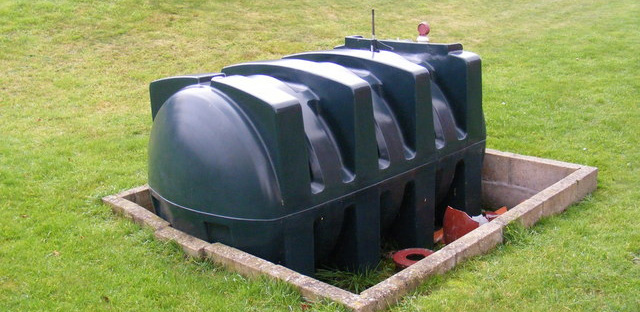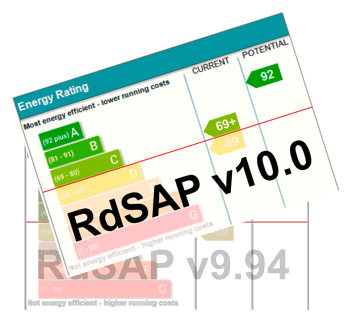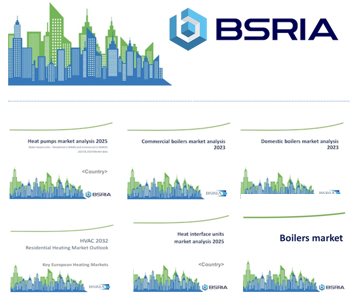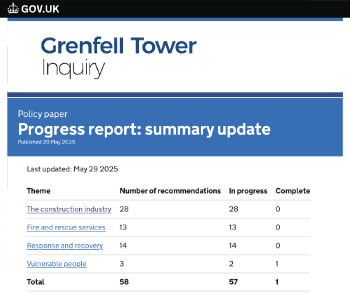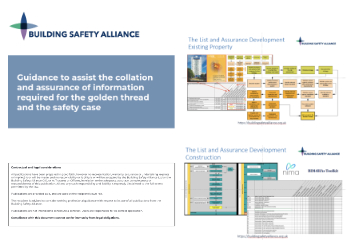Checking oil tanks
[edit] Introduction
When relying on an oil tank for the main source of central heating, it is crucial that it is checked regularly for leaks, corrosion and other signs of delay. Once an oil tank has started to deteriorate, repairs should be made as soon as possible before serious damage is done.
Although oil tanks are built to withstand normal weathering, there are a number of issues to look out for to ensure they remain in good condition, to ensure longevity and to avoid environmental spills from leaks.
This article describes some of the more common occurrences that can be recognised by sight, how these might affect the oil tank and what should be done to resolve these issues.
[edit] Signs of problems
Rust is fairly easy to identify as it shows on the tank exterior and can be flaky or cause blistering of paint. A rusting oil tank can be dangerous as the rust will worsen over time, potentially leading to environmental spills and also perhaps polluting the oil itself, making it less efficient. Rust is only present in metal tanks, however those with plastic oil tanks must check the plastic for any whitening, cracking or splits or any bulging in the tank profile as this can be equally as dangerous.
Leaking joints Cleaning up a leak of heating fuel from a domestic storage tank can be very expensive, so checking for leaking joints is essential. A key sign of an oil leak or a leaking joint is that oil usage suddenly increases unexpectedly. It is important to check the tank and pipework as soon as this is noticed, or purchase a tank monitoring device that can give an early warning of a rapid drop in oil level.
Water or sludge in the tank
Tanks containing water or sludge can clog the pipework and damage or even corrode heating systems, which reduces the oil efficiency and ultimately makes your heating cost more. You can find out whether or not your tank has water or sludge in it by looking for a ‘darkened’ area at the bottom of the tank, or by using water-finding paste which needs to be attached to a long stick and then placed into a tank. The colour of the paste will determine whether or not water is present.
[edit] Solutions
Conducting regular checks will help to reduce the risk of a large repair bill if something is wrong. In addition, an annual check-up by a qualified professional will provide more detail on condition and maintenance requirements.
If you are not entirely sure as to the condition of your oil tank, or if you see something suspicious that you want to know more about, seek advice from a licensed professional.
Featured articles and news
International Electrician Day, 10 June 2025
Celebrating the role of electrical engineers from André-Marie Amperè, today and for the future.
New guide for clients launched at Houses of Parliament
'There has never been a more important time for clients to step up and ...ask the right questions'
The impact of recycled slate tiles
Innovation across the decades.
EPC changes for existing buildings
Changes and their context as the new RdSAP methodology comes into use from 15 June.
Skills England publishes Sector skills needs assessments
Priority areas relating to the built environment highlighted and described in brief.
BSRIA HVAC Market Watch - May 2025 Edition
Heat Pump Market Outlook: Policy, Performance & Refrigerant Trends for 2025–2028.
Committing to EDI in construction with CIOB
Built Environment professional bodies deepen commitment to EDI with two new signatories: CIAT and CICES.
Government Grenfell progress report at a glance
Line by line recomendation overview, with links to more details.
An engaging and lively review of his professional life.
Sustainable heating for listed buildings
A problem that needs to be approached intelligently.
50th Golden anniversary ECA Edmundson apprentice award
Deadline for entries has been extended to Friday 27 June, so don't miss out!
CIAT at the London Festival of Architecture
Designing for Everyone: Breaking Barriers in Inclusive Architecture.
Mixed reactions to apprenticeship and skills reform 2025
A 'welcome shift' for some and a 'backwards step' for others.
Licensing construction in the UK
As the latest report and proposal to licence builders reaches Parliament.
Building Safety Alliance golden thread guidance
Extensive excel checklist of information with guidance document freely accessible.
Fair Payment Code and other payment initiatives
For fair and late payments, need to work together to add value.
Pre-planning delivery programmes and delay penalties
Proposed for housebuilders in government reform: Speeding Up Build Out.
High street health: converting a building for healthcare uses
The benefits of health centres acting as new anchor sites in the high street.







